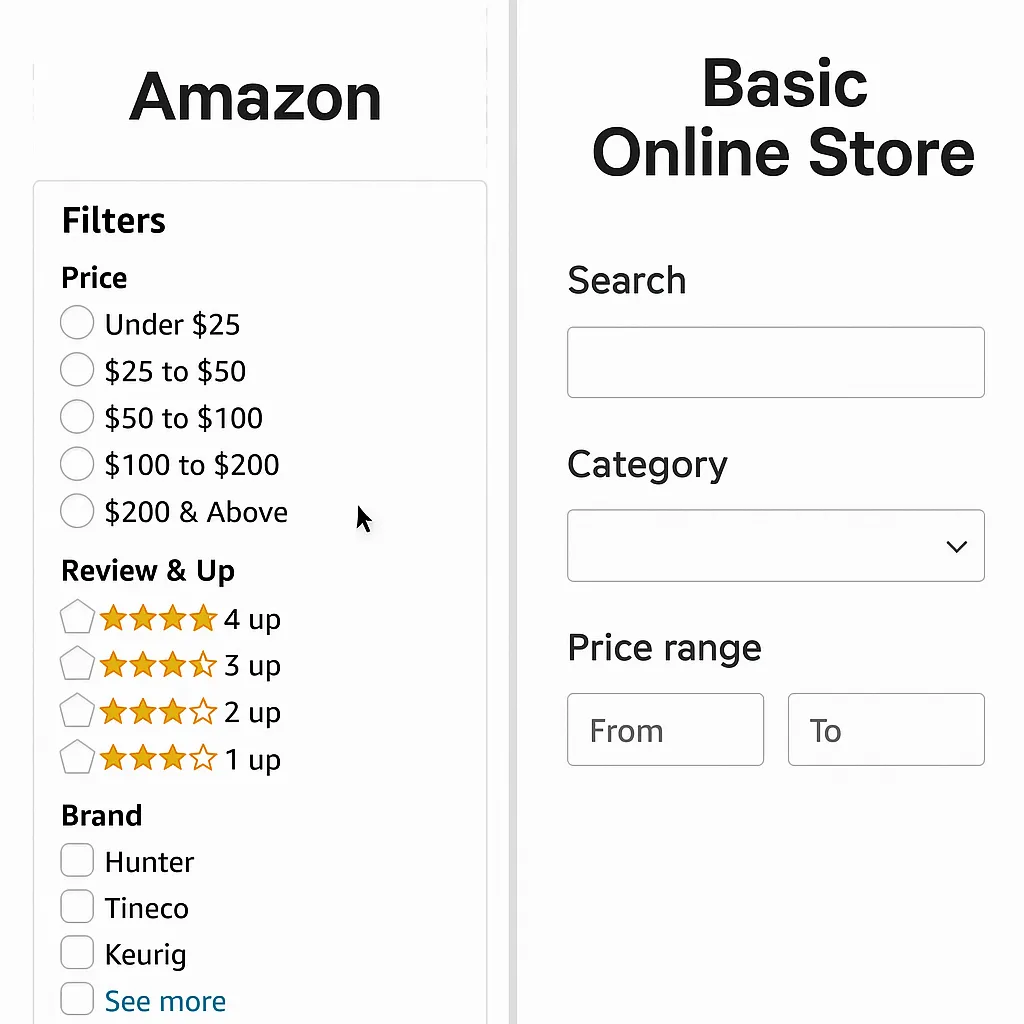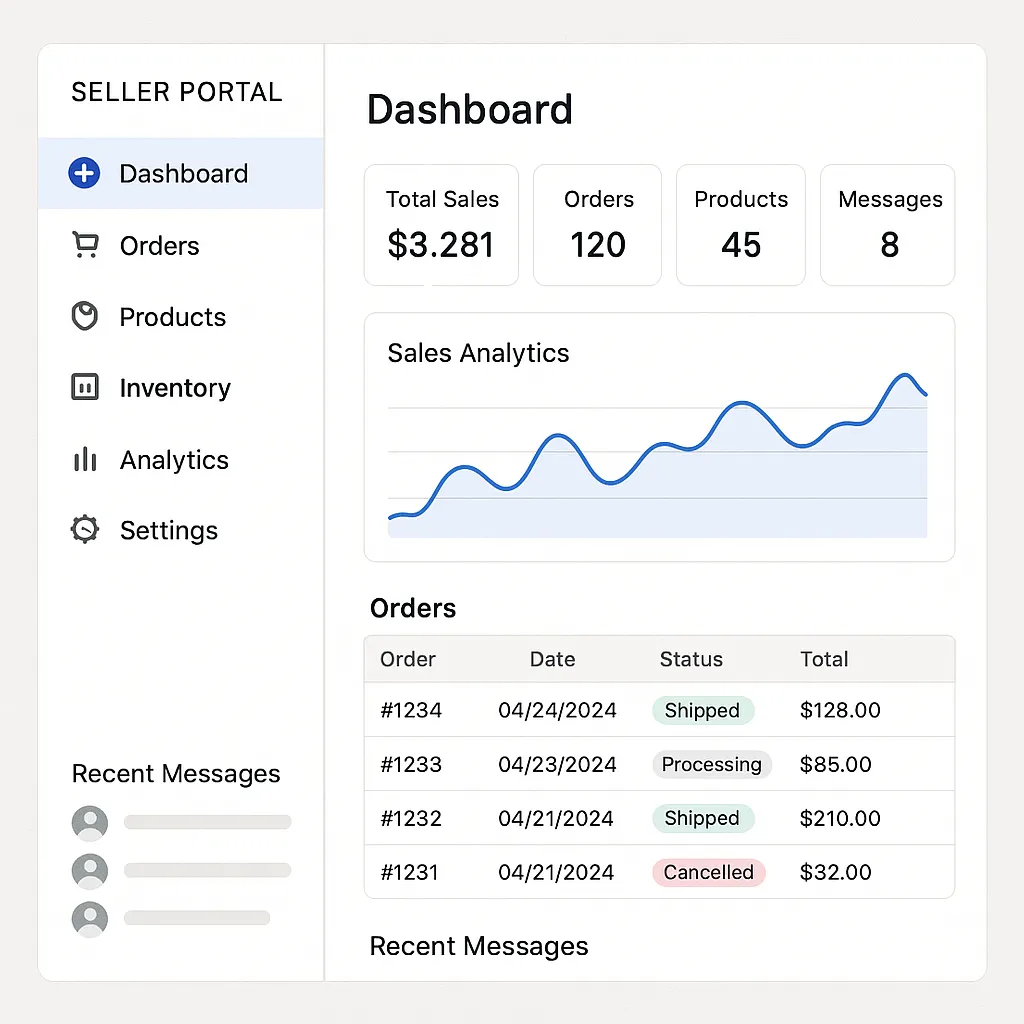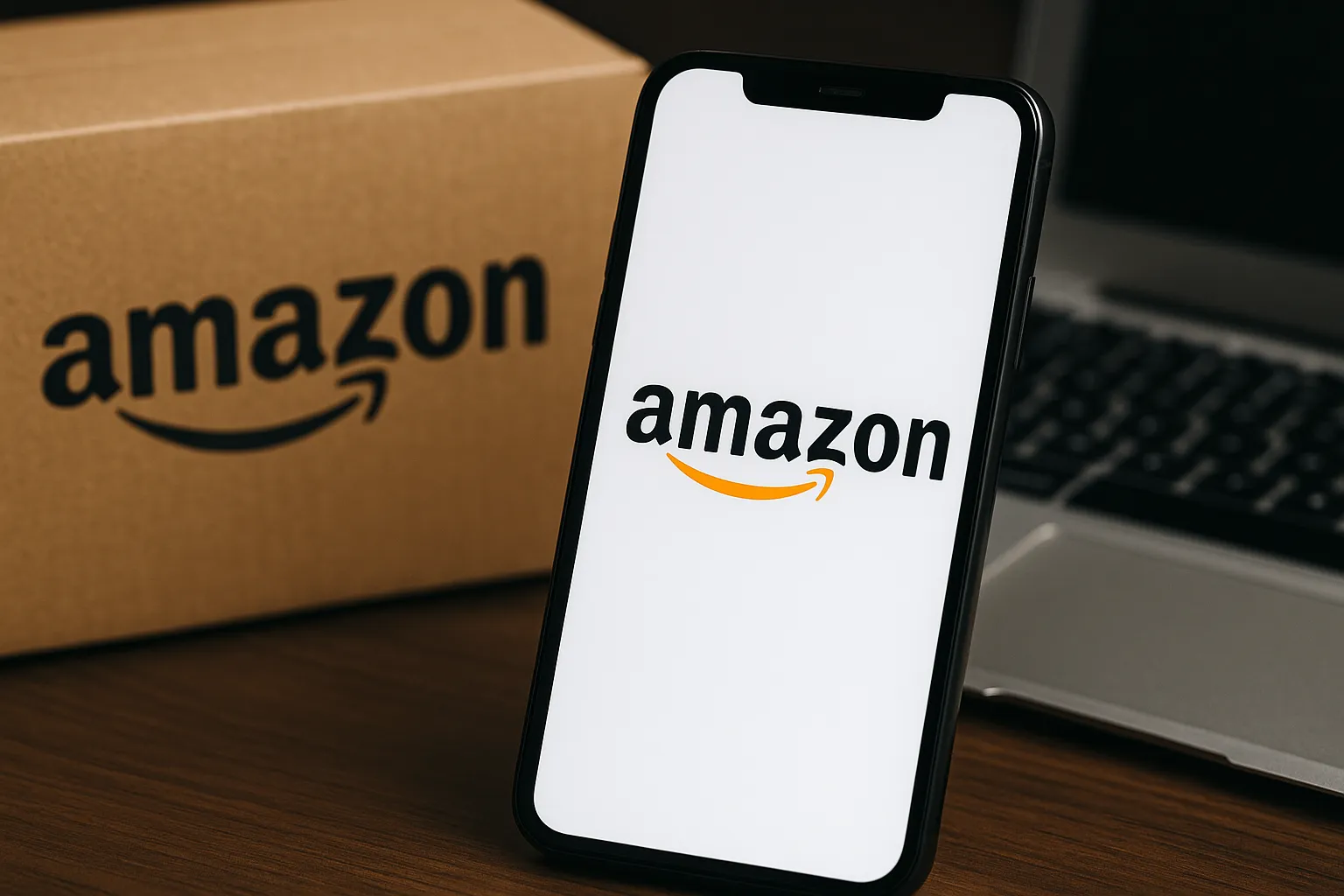Back when ecommerce was still a curiosity and not a necessity, most of us were hesitant to buy even a book online. Fast forward to today, and Amazon has turned “Add to Cart” into a reflex. Whether you’re an aspiring entrepreneur, a startup founder in stealth mode, or a digital dreamer sketching out your next big idea on a napkin—understanding Amazon’s features isn’t just smart. It’s foundational.
You see, Amazon didn’t become a trillion-dollar empire overnight. It wasn’t just the two-day shipping or that tempting “Buy Now” button. It was the sum of dozens (if not hundreds) of micro-experiences, stitched together to create a customer journey so seamless it feels like magic. And guess what? That magic can be reverse-engineered—if you know where to look.
So, if you’re planning to build your own ecommerce platform—or thinking about a full-blown Amazon clone—stick around. We’re diving deep into the feature set that made Jeff Bezos’ baby a behemoth. And yes, Miracuves can help you build a high-performance, monetization-ready clone that doesn’t cut corners.
Read more: What is Amazon App and How Does It Work?
The Powerhouse Homepage
The Amazon homepage is like Times Square for ecommerce—jam-packed but surprisingly easy to navigate. You’ve got:
- Personalized banners and product carousels
- Localized deals (based on your IP)
- Seasonal campaigns, flash sales, and trending sections
Want to stand out in a crowded marketplace? Start with a homepage that feels like it knows the user.
AI-Powered Product Recommendations
Amazon’s recommendation engine isn’t just smart—it’s eerily good. It taps into:
- Browsing history
- Wishlist activity
- Purchase patterns
- Ratings & reviews
These micro-signals are crunched by machine learning models to surface products you didn’t even know you needed. This is where most ecommerce startups fall short.
Pro Tip: If you’re building an Amazon clone, make sure AI-driven suggestions are part of your MVP.
Seamless Search and Navigation
Amazon’s search bar does more than autocomplete. It’s predictive, dynamic, and contextual.
- Search suggestions change with seasons
- Filters adapt to the category
- Voice search integration via Alexa
Now compare that to the average Shopify store’s search function. Worlds apart, right?

Product Listings That Convert
Here’s where Amazon shines:
- High-res images with zoom
- 360° product views
- Detailed bullet-point descriptions
- Q&A section from verified buyers
- Cross-sells and “Customers Also Bought” blocks
Each listing is a mini sales funnel.
Pro Tip: Don’t just copy the layout—focus on information density and trust-building signals.
1-Click Checkout & Multiple Payment Options
The “1-Click Purchase” was a game-changer. Amazon also supports:
- Debit/credit cards
- UPI and wallets (in India)
- EMI & Buy Now, Pay Later
- Amazon Pay integration
Frictionless checkout = higher conversions. It’s that simple.
Delivery Fulfillment & Prime Perks
Logistics is Amazon’s secret sauce. Key features include:
- Real-time order tracking
- Scheduled delivery slots
- Same-day or 2-day shipping via Prime
- Amazon Locker pickup options
If you’re launching your own ecommerce app, integrate with third-party logistics or build warehouse management into your stack.
Product Reviews, Ratings & User Credibility
Amazon practically invented social proof for ecommerce. Features include:
- Verified purchase badges
- Star ratings and filters
- Image/video uploads by users
- “Most helpful” review votes
Reviews aren’t just about trust—they’re content gold for SEO.
Wishlist, Save for Later & Gift Registries
Psychology meets UX. By letting users save items, Amazon taps into FOMO and future intent. Sub-features:
- Wishlist sharing
- Baby, wedding, and gift registries
- “Buy again” and reorder options
It’s all about long-term user retention, not just cart size.
Subscriptions and Dash Buttons
Recurring revenue? Yes please. Amazon’s Subscribe & Save model does this brilliantly:
- Automatic refills of essentials
- Discounts on bundled items
- Scheduled deliveries with reminders
Mirroring this feature can create predictable revenue for your clone.
Multilingual, Multi-Currency, Multi-Everything
Amazon speaks your language—literally. From Hindi to Hebrew, Yen to Euros, features include:
- Location-based currency switching
- Language settings stored in cookies
- Auto-translation of user-generated content
A must-have if your app plans to go global.
Seller & Vendor Dashboards
Beneath Amazon’s glossy exterior is a thriving B2B backend. Sellers get:
- Inventory tools
- Promotion & coupon creators
- Ad campaign dashboards
- Analytics & performance scorecards
If you’re cloning Amazon, don’t skip the seller side of things.

Returns, Refunds & Customer Service Chatbots
Customer obsession? Amazon walks the talk.
- Hassle-free return policies
- Chatbots with instant responses
- Refund status tracking
- Escalation to human support if needed
Your app’s support system should be just as obsessed with keeping customers happy.
Read more: Best Amazon Clone Scripts in 2025: Features & Pricing Compared
Looking to launch a powerful mobile shopping experience? Discover our full-service eCommerce app development capabilities to build a customizable, secure, and scalable platform that converts
Conclusion
Amazon is less a store and more an ecosystem—a finely tuned orchestra of features working in sync. From predictive search to personalized offers, everything is engineered to sell more while making the user feel in control.
But here’s the kicker—you don’t have to start from scratch.
At Miracuves, we help innovators launch high-performance app clones that are fast, scalable, and monetization-ready. Ready to turn your idea into reality? Let’s build together.
FAQs
Q:1 What’s the most important feature to clone from Amazon?
Start with personalized recommendations and seamless checkout. These directly impact conversions.
Q:2 Can I include Prime-like perks in my Amazon clone?
Absolutely. You can offer loyalty perks, faster delivery, and subscription-based memberships with custom logic.
Q:3 How hard is it to build Amazon’s search and filter UX?
It’s not trivial, but with the right tech stack (and Miracuves’ dev team), it’s totally doable.
Q:4 Do I need both buyer and seller dashboards?
Yes. Amazon’s ecosystem thrives on giving power to both sides—shoppers and sellers.
Q:5 What tech is behind Amazon’s performance?
It’s a mix of microservices, AI, cloud infrastructure, and ruthless UX optimization.
Q:6 Can Miracuves help me build an Amazon clone?
You bet. From frontend polish to backend horsepower, we’ve got the tools and talent.
Related Articles:








